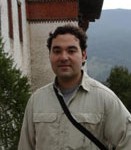Omar W. Rosales, J.D., is an American Writer, Anthropologist, Expedition Leader, and Filmmaker best known for his book, "Elemental Shaman". Rosales travels the World to profile Spiritual Masters and transmit their messages for humanity. Famous interviewees include the Manchen Lopon of Bhutan, His Holiness, the 17th Karmapa, and His Holiness, the 14th Dalai Lama.
A student of noted Mayanists William R. Fowler, Arthur Demarest, and Edward Fischer, Rosales graduated with an Honors degree in Anthropology and Economics from Vanderbilt University in the late 1990s. After college, he served as a Captain in the United States Marine Corps. His assignments included two overseas tours in Japan. Rosales subsequently graduated from The University of Texas School of Law in 2005.
An experienced hiker and expedition leader, Rosales currently lives in the Pacific Northwest. For more info about Elemental Shaman, please visit http://www.elementalshaman.com/
Across the planet, from the steppes of the Himalaya to the deepest jungles of Guatemala, a renewed emphasis on ecology, cultural preservation, and spirituality has led to an increased awareness of shamanism as a method to address environmental, humanistic, and intrapersonal challenges. With a shift to indigenous healing traditions and a return to old ways of thought, shamans are rapidly becoming the cultural heroes that bridge the gap between the mystical regions of the Upper, Middle, and Lower worlds, as well as the enigmatic and ethereal realms of the collective unconscious, conscious, and superconscious mind of humanity.
The Rise and Fall of the Plastic Shamans
In the latter half of the 20th century, a renewed interest in spirituality, politics, and the occult led many on explorative intrapersonal journeys. Fueled by the counterculture influence of the 1960s, icons such as Timothy Leary, Carlos Castaneda, Jim Morrison, and Hunter S. Thompson glamorized the quest for immortal truth, defined by native indigenous healers or shamans. Yet, the truth would come at a great cost, as facts were oft-times distorted or entire accounts of ethnographies fabricated. In fact, some of the most important fieldwork in anthropology had been done 40 years prior by Bronisław Malinowski, Richard Schultes, and other scholars that few would know outside university circles. [1]
Through research, it was determined that entire accounts of indigenous spiritual and healing traditions, popularized during the 1960s, had been fabricated. Although many continue to quote Don Juan's shamanic insight, the Yaqi shaman Don Juan never existed, except for in the mind of Carlos Castaneda. [2] Popular literature in the 1990s continued the Western imagining of how shamans think, pray, and work. There was no walkabout in Australia that yielded a Mutant Message from Down Under, nor is there a Sisterhood of the Shields that provides shamanic knowledge. [3] The Western fables continue to this day, with interpretations of 2012 in the Maya Calendar written by self-professed International Maya Elders that are Caucasian and born in Michigan. [4]
With regard to December 21, 2012 in the Maya Calendar, the most important question to ask is, "What are the indigenous Maya population doing to prepare for 2012?" Do we see villages in the Peten Jungle being razed and moved to safer and higher elevations by Maya elders? Are entire ethnic subgroups of Maya, such as the Tz'utujil of Lake Atitlan, selling their worldly possessions and moving to isolated islands in Micronesia? Of course not. The most important aspect of the Long Count that sensationalist books fail to mention, is that the Maya calendar never ends. Which brings us back to the wolfsbane of the Plastic shamans, that there is no substitute for anthropological research and fieldwork.
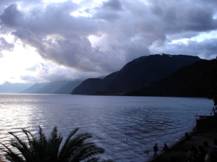
Lake Atitlan
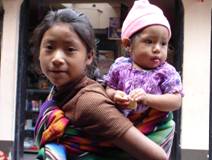
Guatemalan Children of Lake Atitlan
So, where do we find out about shamans? What is a shaman? What abilities do shamanic practitioners master? Moreover, do any real shamans still exist? The answer is once again, in the field.
Return to Scholarship
Through the meticulous fieldwork and studies of Franz Boas, Michael Harner, Martin Prechtel, and Wade Davis, the shared characteristics between shamans of various cultures have been identified.
Shamans are not like you or I. A shaman is a native healer, who uses plants and herbs to effectuate change in patients. Moreover, a shaman has the ability to enter Altered States of Consciousness (ASCs) at will, interact with beings in the Non-Ordinary Realms (NORs), and create physical changes in waking reality. [5] A shaman can change her or his energy field to interact with the energy fields of other living objects. Perhaps the most important part of a shaman is that the shaman is typically indigenous. That is, they are transmitting centuries-old cultural knowledge, through bloodlines and kinship. Without this bloodline, without this legitimacy of sang real (the holy blood, the effervescent teacher) and the enhanced genetic traits from this bloodline, a practitioner is not a true shaman.
One of the most significant roles of the shaman is that of psychopomp. [6] A psychopomp is an intermediary between the world of the living and the land of the dead. The psychopomp will transmit messages, share insight, communicate thoughts, and offer warnings from the land of spirit. Communication occurs through dreams, ASCs, and rituals, which allow the shaman to enter a receptive state. The shaman will receive the message either as a symbol or an auditory message to be passed on to the intended receiver. [7]
Another shamanic ability is divination. Through the use of tools such as bones, cards, entrails, sticks, or runes, a shaman will augury the future. The ability to communicate through dreams is another shamanic skill, used by shamans to rely messages over great distances. Some of the more esoteric shamanic abilities, demonstrated by shamanic masters of the last 2000 years include loco tempestas (the ability to control the weather), bilocation, levitation, and flight. [8]
Yet, how do we find true shamans in the modern age? How do we discern the theatrical from the real, the plastic from the authentic? And what is the truth to shamanism and the limits of human potential?
It was a search for these truths, that led me on a worldwide quest to find the real amongst the landscape of illusion. It was this search that brought me to the elemental shamans.
Cherokee SpiritWalker – Expert in Soul Retrieval
In the Valley of the Sun, at the bottom of an Ancient Ocean, I had my first encounter with soul retrieval and a Cherokee SpiritWalker. The son of a Cherokee medicine man, Gary Gent is a Vietnam Veteran with an unassuming nature, and an important skill, the ability to transverse worlds.
Soul Retrieval is the ability of a shaman to heal the psychological trauma caused by cognitive disassociation. [9] Shamans believe that our soul is made up of individual pieces. During periods of great stress, fear, or difficulty, soul pieces will fragment and become stuck or attached to a particular place or person. [10] The accompanying psychological effects may include memory loss, unexplained nervousness, and a feeling of disconnect or isolation. It the role of the shaman to travel to the Upper, Middle, and Lower Worlds to obtain information about the soul piece and return it to its owner. These Upper, Middle, and Lower Worlds are also known as the Non-Ordinary Realms (NORs).
Gary follows this traditional method of soul retrieval, but with a twist. Using a drum as a sonic driver, Gary can enter an Altered State of Consciousness within minutes and retrieve a soul piece. Gent travels to the Lower World to obtain guidance from animal and plant guides. Having obtained the guidance of spirits from the Lower Realm, the Cherokee SpiritWalker will then travel to the Middle World to locate the fragmented soul piece. Once found, the reintegration will begin as the soul piece is returned to the owner. Travel to the Upper Realms is used for revelation and guidance from gods, deities, and beings of legend.
When the soul peace is found and healed, the shaman uses his breath to blow the soul piece back into the patient. What is unique about Gary is his uncanny ability to describe where the fragmentation occurred and where the soul piece was found. With regard to my own experience, Gary was able to accurately detail a college dorm room, a military barracks, and a grandparent's home, all without prior knowledge of these locations.
So, how exactly does the Cherokee SpiritWalker break linear time and glimpse into the patient's past? A more enigmatic question remains. What if the Upper, Middle, and Lower worlds do not exist at all, but are just a method for Gary's consciousness to describe his mind's ability to utilize quantum mechanics and break linear time?
Mysteries in Guatemala: The Cult of Maximon
For over 1500 years, shamans in Maya communities along the Central Highlands, coastal areas, and Peten jungle region of Guatemala and Mexico have predicted eclipses, created calendars, tracked the movements of Venus, and forecasted periods of symbolic creation called Baktuns. The end of the current cycle of creation, the 13th Baktun, falls on December 21, or December 23, of 2012 (depending on the GMT Correlation interpretation of the Maya calendar. [11] So, will the end date of the current cycle usher a period of cataclysms, disease, and catastrophe? Or will life remain the same, relatively unchanged from one day to the next? More importantly, what do the Maya think?
If there were ever a City of Shamans, it would be Santiago Atitlan, Guatemala. Nestled upon the north shores of Lake Atitlan, the grittiness and squalor of the city is hidden by lush volcanoes. Taking a 30 minute ferry ride or lancha from Panajachel, the boatmaster must navigate past a cove to uncover the bizarre magnificence of the city. Homes are incoherently stacked upon one another, like matchboxes organized by drunken hands. Fires burning grass, timber, and tires spin their smokestreams into hazy skies. Landing in Santiago, a traveler's first instinct is clear: get out.
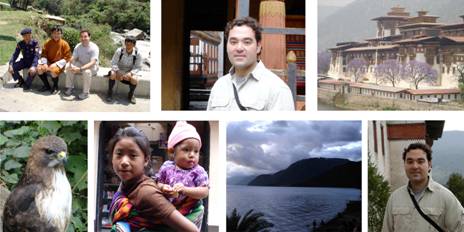
Omar Rosales travel photo Montage
Yet the city and the countryside are maintained in a relative peace by secret brotherhoods call Cofradias. Old village families have evolved to control the worship and access to the effigy and saint of the region, the Maximon. It is this Lord of the Lake, this Holy boy, the Maximon (pronounced Mosh-ee-moan) that bestows favors, offers protection, seeks vengeance against enemies, and guards the indigenous Tz'utujil Maya populace.
More just than a bundle of sticks, the Maximon represents triumph over tyranny, success over slaughter. The effigy is the last living Maya god, the only survivor of the cosmological onslaught of the Catholic Church and Spanish Conquest. Worship of the deity is tolerated due to a tenuous understanding with the local Catholic Priests. The Maximon is always displayed next to a glass coffin containing a statue of Christ. And the Maximon is told to be the son of Christ.
But these interpretations are wrong, as the Maximon is an amalgamation of Maya nature spirits. The Maximon has the flying ability of Kukulkan, the Maya god of Wind. The statue has the ability to bring rain, like the Maya god of Chac. And the effigy can conquer disease, like Cit-Bolon-Tum, the Maya god of healing. Some legends continue the syncretism fable, saying that Maximon is San Simon, a saint petitioned to provide help for clandestine activities, such as trafficking narcotics and avoiding the law. However, this is also incorrect as there is no Saint Simon in Catholic theology.
Crafted by native hands, the Maximon is said to be carved from a Palo de Pito or Coral tree. Looking for a suitable vessel for the Maya deity, two brothers began the search for a tree. The brothers, Juan and David Co, were led by dreams and came upon an enigmatic tree in the midst of a jungle clearing. In the flesh of the tree, on the bark amidst gnarls and limbs, the brothers began to see the symbols of the Maya: a stalk of corn, a bird, a jaguar, and a two-headed eagle – the symbol of Maya kings.
Carving long into the night, the brothers infused the now-fallen tree, with the nature spirits from the forest and the DNA-infused sweat from their brows. It was the brother's DNA that gave life and character to the effigy. It was shamans' hands that created their supreme ruler and last Maya lord. Yet, it was the spirit in the brothers' hearts that held a secret. Once finished, one of the brothers would become the effigy's standard-bearer or Telinel. The Telinel would be responsible for the upkeep and care of the statue. The Telinel would be the village's first Shaman, with the ability to communicate to the statue of Maximon via dreams.
A series of events would necessitate the first surgery and maiming of the Maximon. For when created, the statue was infused with the trickster spirit in nature and in the brothers' hearts, this was the secret. And what's funny for the trickster, is not always funny for the recipient of the trick. After the Maximon was caught shape-shifting and visiting the beds of the villager's wives, the Telinel hatched a plan. Upon getting the statue drunk with alcohol and prayer, the village elders performed a ceremony and, more importantly, an amputation. This is why the modern statue has no feet, is restrained by rope, and is missing a finger. Thus the effigy would never again be mistaken for a human male. And now the statue is forever restrained, to carry out the will of the shamans.
The brotherhoods, or Cofradias, manage the upkeep of the statue. With over 10 Cofradias in Santiago Atitlan, the statue is moved from family center to family center every year, to maintain a tenuous balance of power between rival cofradias and families. Whomever has control of the statue, has access to the thousands of dollars given in tribute every year to the Maximon. Every shamanic ceremony around Lake Atitlan must be first be approved by the Telinel. Without the blessing of the Maximon, and the approval of the Telinel, the Maya shamanic rituals are destined to fail. This is the belief of the local populace, a strong enough belief that can sometimes distort the supernatural nature of Spellcasting.
The power to perform magicks rests with the practitioner – the shaman. And the tool the shaman uses to break linear time and apply quantum physics is the shaman's own mind and consciousness. The power rests with an individual's beliefs, and the additional electrical and quantum energy generated by the human brain and spinal cord. Still, the Maximon is worshipped and revered all over Central America. So, what other secrets do the Tz'utujil Maya of Santiago Atitlan know?
Ghosts in the Air Realm: Footpaths to Himalayan Glory
Another breed of shamanic practitioners not typically discussed are the Vajrayana Buddhist Masters of Tibet and Bhutan. Bon Shamanism predated Buddhism in these mountainous and isolated regions of India, Bhutan, and Tibet.
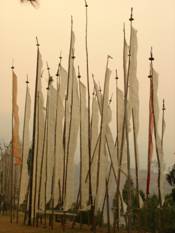
Prayer Flags in Bhutan
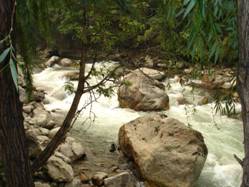
River in Bhutan
The introduction of Buddhism supplanted the beliefs and acceptance of Bon. Yet the most evolved and mystical type of Buddhism, known as Vajrayana or Diamond Vehicle Buddhism, returned to the regional Bon roots. Typified by the recognition of Adepts with supernatural powers such as loco tempestas, bilocation, and levitation, the Vajrayana Masters utilize esoteric texts, long periods of chanting and meditation, and secret rituals to refine their concepts of consciousness.
The hallmark of a Vajrayana Buddhist Master is the ability to achieve transcendence, break the cycle of Karma, and become a Bodhisattva, or saint, in one lifetime. Legends tell that the most powerful Buddhist magicians of our age were also Vajrayana adepts: Padmasambhava, also known as Guru Rinpoche, who brought Buddhism to Bhutan from Swat. Milarepa, who destroyed an entire village with magick, yet after his remorse and upon his realization, changed his life and became a Buddhist teacher and healer. Pema Lingpa, a magician from Bhutan who lept into a deep river gorge, and emerged from the water holding lighted lamps and sacred Buddhist treasures called tertons, is another example of these healer-magicians.
Yet the most startling contradiction along a Vajrayana Buddhist Master's pathway is the ultimate realization, the dissolution of self and ego. That individual souls do not exist. That power comes from the universe. And that the Clear Light of the Buddha-mind forms a conscious connection with the thoughts and feelings of all living beings. This is the Final Realization, the ultimate insight for a Vajrayana Buddhist Master, that we are one. The final answer, that there is no self, but the All. [12]
Don't ignore the Hydra
The major concepts of modern theoretical physics are refined every two decades. Old science is cut down, and gives way to a new head or school of thought. Thirty years ago, concepts such as string-theory, time-travel, and instantaneous movement between points of space hundreds-of-thousands of light years apart would have been science fiction. But new research into the folding of space-time, movement through a circular universe, and D-branes, has made theoretical science plausible. [13] But haven't shamans been doing this research for millennia?
When we talk about divination and clairvoyance, isn't a shaman's Altered State of Consciousness allowing his mind to break the linear time of a three-dimensional plus-time (3D+T) universe? When we examine the fabric and weavings of the Tz'utujil Maya of Santiago Atitlan, and determine that they perceive the universe as a geometric pattern, that can be folded to an infinitely small point suited for instantaneous journeys between solar systems, aren't we describing worm-holes and faster-than-light travel? When a Buddhist master says the thoughts of all sentient beings are connected by Buddha-mind, aren't we describing String Theory and the convocation of D-branes, black p-branes and Neveu-Schwarz 5-branes? [14]The shamanic world is the world of quantum physics. Yet, are we adapting shamanism and indigenous beliefs to explain science? Or is science evolving to the point where it can explain and quantify indigenous shamanic beliefs? With science, the improbable becomes possible. So, what new breakthroughs will we see in the 21st Century? And how will shamans continue to teach us?
The Elemental Shamans
These are the Elemental Shamans. These healers give us the modern and true answers to fictionalized accounts provided by wayward authors. By meticulous research, we determine that there is no need for cultural misappropriation or theft of native indigenous insight. There is no necessity to make up accounts. To learn, all we must do is ask. To discover, we must explore. But the essence will always come back to fieldwork.
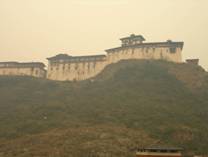
Dzong or Monastery Fortress in Bhutan
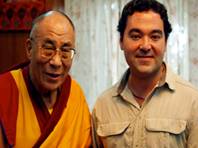
His Holiness the Dali Lama and author
There is no substitute for spending time in the jungle. There is no facsimile to visiting Buddhist temples and monasteries in the Himalaya. And there is no faux journey that will substitute for the insight and trans-dimensional knowledge (predicted by String theory) that is gained by the consumption of the Vine of the Souls, Ayahuasca, as distilled by the hands of Peruvian shamans. [15]
If we desire arcane knowledge, ask. If we want to learn about native traditions, journey. Travel to these indigenous healers and ask questions. Ultimately, the journey for shamanic knowledge is the quest to understand culture, explore the quantum potential of the human body, and demystify the consciousness of the human machine.
Evolution is within us, the power is within us, to change our world. Its in the palm of our hands. Its found in the beauty of our speech and thought. The evolution of humanity is determined by the neuroplasticity of our brains, perhaps even already pre-encoded in our DNA. [16] But shamans have already been teaching us, these profound and holy truths, for thousands and thousands of years.
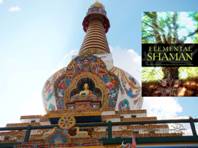
Buddhist Stupa in India
Endnotes
- J. Narby, The Cosmic Serpent (Canada: Jeremy P. Tarcher, 1999). [back to text]
- R. de Mille, Castañeda's Journey: The Power and the Allegory (United States:
IUniverse.com, 2001). [back to text] - L. Aldred, "Plastic Shamans and Astroturf Sun Dances: New Age
Commercialization of Native American Spirituality" American Indian Quarterly,
Vol. 24, No. 3 (2000): 331-333. [back to text] - B. Hand Clow, The Mayan Code (United States: Bear and Company, 2007). [back to text]
- M. Eliade, Shamanism: Archaic Techniques of Ecstasy (Princeton, N.J.: Princeton
University Press, 2004). [back to text] - Ibid. [back to text]
- E. Frecska, "The Shaman's Journey, Supernatural or Natural? A Neuro-
Ontological Interpretation of Spiritual Experiences," in Inner Paths to Outer
Space: Journeys to Alien Worlds Through Psychedelics and Other Spiritual
Technologies (Canada: Park Street Press, 2008). [back to text] - O. W. Rosales, Elemental Shaman: One Man's Journey into the Heart of
Humanity, Spirituality, & Ecology (United States: Llewellyn Worldwide, 2009). [back to text]
- Ibid. [back to text]
- S. Ingerman, Soul Retreival: Mending the Fragmented Self (United
States: HarperCollins Press, 1991). [back to text] - L. Schele and D. Freidel, A Forest of Kings: The Untold Story of the
Ancient Maya (New York, N.Y.: Harper Perennial, 1990).12. O.W. Rosales, Elemental Shaman. [back to text]
- O.W. Rosales, Elemental Shaman. [back to text]
- String theory. (2009, June 17). In Wikipedia, The Free Encyclopedia. Retrieved
12:40, June 17, 2009, from
http://en.wikipedia.org/w/index.php?title=String_theory&oldid=296947395 [back to text] - A. Giveon and D. Kutasov. "Brane dynamics and gauge theory," Rev. Mod. Phys.
71, 983 (1999). [back to text] - L.E. Luna, "The Varieties of the Ayahuasca Experience," in Inner Paths to Outer
Space: Journeys to Alien Worlds Through Psychedelics and Other Spiritual
Technologies (Canada: Park Street Press, 2008). [back to text] - G. Hancock, Supernatural: Meetings with the Ancient Teachers of Mankind
(New York, N.Y.: The Disinformation Company, 2007). [back to text]





